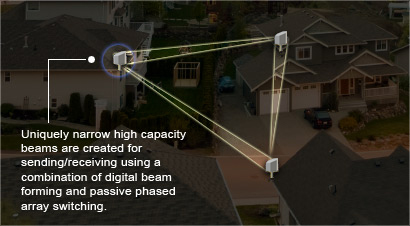Error message
- Deprecated function: implode(): Passing glue string after array is deprecated. Swap the parameters in drupal_get_feeds() (line 394 of /home1/gigaband/public_html/includes/common.inc).
- Deprecated function: The each() function is deprecated. This message will be suppressed on further calls in menu_set_active_trail() (line 2394 of /home1/gigaband/public_html/includes/menu.inc).
Competitive Advantage
Gigaband Provides a Free-Market Solution
to the Net Neutrality Debate

The Problem Demands a Disruptive Solution
 Millions of consumers and businesses located outside of metro areas find themselves “stranded” without robust and reliable broadband service. The problem is solved with disruptive technological innovation, coupled with a strong economic model that takes advantage of existing chipsets and related equipment.
Millions of consumers and businesses located outside of metro areas find themselves “stranded” without robust and reliable broadband service. The problem is solved with disruptive technological innovation, coupled with a strong economic model that takes advantage of existing chipsets and related equipment.
Out of the box, a single Gigaband Community Network Starter Pack will consist of 30 roof-mountable Subscriber Nodes, 1 Community Hub Kit, and a Network Optimizing Server (NOS). The Starter Pack includes all the components needed to serve the first 30 users in a new Gigaband community. Community Hub Kits can be mounted on low profile buildings, (for example coffee shops). Each Community Hub aggregates traffic from up to three or four hops of Gigaband Subscriber Nodes. Every node deployed should be within a quasi- line-of-sight within a 1/4 to 1/2 mile range of two or three other nodes. This pattern of node deployments will create service footprints of 10 to 40 sq. miles, making the service potentially available to as many as 3,000 to 10,000 homes in a community depending on neighborhood housing densities. Quasi-line-of-sight means that signals can be expected to pass through reasonable amounts of foliage in the path between any two nodes. However if serious physical obstacles or significant radio interference are blocking a path between two nodes, the nodes are programmed to immediately fall back to aiming at other nodes in different directions that are not blocked. This ability to use redundant alternate physical paths when needed is what gives Gigaband its dramatically higher connection reliability when compared to other wireless network architectures such as point-to-multipoint or conventional mesh networking.
 Additional Subscriber Nodes (one for each new subscriber) are expected to cost $200 or less after volume production is achieved. With only 10% penetration of a 3,600 home community, or 360 live-subscribers, the all-in deployment cost is expected to be a disruptive $309 per subscriber. At 720 subscribers, it may be less than $253. A single Gigaband Community Hub is normally expected to serve up to 500 subscribers before another Community Hub needs to be established depending on the types of services offered across the network.
Additional Subscriber Nodes (one for each new subscriber) are expected to cost $200 or less after volume production is achieved. With only 10% penetration of a 3,600 home community, or 360 live-subscribers, the all-in deployment cost is expected to be a disruptive $309 per subscriber. At 720 subscribers, it may be less than $253. A single Gigaband Community Hub is normally expected to serve up to 500 subscribers before another Community Hub needs to be established depending on the types of services offered across the network.
